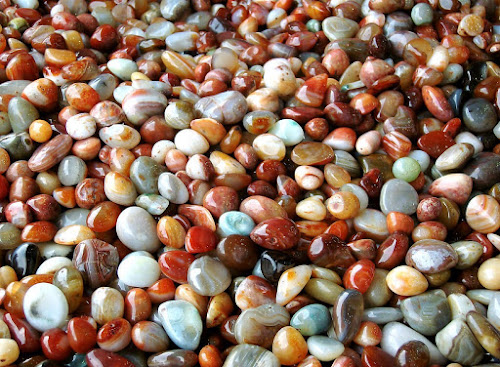From Grass to Granite: Covering Your Lawn with Rocks
Transforming your lawn from a traditional grass-covered landscape to one adorned with rocks can breathe new life into your outdoor space. While grass lawns have long been a staple of residential yards, the trend of incorporating river rocks, stones, and other hardscape materials is gaining popularity for its aesthetic appeal, low maintenance requirements, and durability. Whether you want to create a contemporary desert-inspired oasis or a tranquil Japanese rock garden, covering your lawn with rocks offers endless design possibilities.
This comprehensive guide will explore the benefits of switching from grass to granite and provide practical tips for planning, designing, and implementing your rock-covered landscape.
Benefits of Rock Landscaping
Low Maintenance: Unlike grass lawns that require frequent mowing, watering, and fertilizing, rock landscapes are low maintenance. Once installed, rocks require minimal upkeep, saving time, water, and effort.
Water Conservation: In regions where water conservation is concerned, replacing grass with rocks can significantly reduce water usage. Rocks do not require regular watering, making them an eco-friendly landscaping option.
Durability: Rocks are durable and long-lasting, able to withstand environmental elements such as sun exposure, heavy rainfall, and foot traffic. They retain their color and texture over time, maintaining the beauty of your landscape for years to come.
Versatility: Rocks come in various shapes, sizes, colors, and textures, allowing endless design possibilities. Whether you prefer natural stone's rugged look or polished granite's sleek appearance, you can customize your rock landscape to suit your style and preferences.
Erosion Control: Rocks help prevent soil erosion by providing a stable surface that holds the soil in place. They also aid drainage, allowing rainwater to percolate into the ground rather than causing runoff and erosion.
Planning Your Rock Landscape
Assess Your Space: Begin by assessing your lawn area to determine your rock landscape's size, shape, and layout. Consider existing features such as trees, shrubs, and pathways, and plan accordingly to incorporate rocks seamlessly into your design.
Choose Your Rocks: Select rocks that complement your overall design aesthetic and fit the scale of your landscape. Consider color, texture, shape, and mix and match different types of rocks, stones, and beach pebbles for visual interest.
Prepare the Site: Clear the lawn area of existing grass, weeds, and debris before installing rocks. Level the ground and add a layer of landscape fabric to suppress weed growth and improve drainage.
Design Elements: Incorporate design elements such as pathways, focal points, and borders to enhance the visual appeal of your rock landscape. Use rocks strategically to create texture, contrast, and visual interest throughout the space.
Implementing Your Rock Landscape
Placement: Start with larger rocks or boulders as focal points. Then, smaller rocks, gravel, or pebbles, varying in size and placement, should be added for a natural appearance.
Layering: Create depth and dimension by layering rocks of different sizes and shapes. Use larger rocks as base layers and fill gaps with smaller rocks or gravel to achieve a balanced and cohesive design.
Edging: Define borders and pathways with rocks or you can use black Mexican beach pebbles edging to delineate different areas of your landscape. This helps create a clean, polished look while preventing rocks from spilling onto adjacent surfaces.
Maintenance: Once your rock landscape is set, upkeep is minimal. Remove debris, rinse rocks, and replace weed fabric as needed. Compared to grass lawns, maintenance is significantly reduced.
Conclusion
Switching from grass to rocks in your lawn brings numerous benefits, including less maintenance, water conservation, and enhanced durability. With thoughtful planning and execution, you can craft a visually striking outdoor area that reflects your style and enhances your home's beauty. Whether you prefer natural stone's rugged appeal or polished granite's modern elegance, the transition can elevate your landscape's aesthetics and functionality.




Comments
Post a Comment